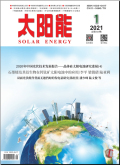太阳能Issue(8):78-84,7.DOI:10.19911/j.1003-0417.tyn20230906.01
风电机组设计标准中风模型的演变过程
INTRODUCTION TO EVOLUTION PROCESS OF WIND MODEL IN WIND TURBINE DESIGN STANDARD
摘要
Abstract
Wind parameters are the most important external environmental parameters in the design of wind turbines,and their values directly affects the accuracy of the wind model,which in turn affects the design cost of wind turbines and their adaptability in the on-site environment.In order to enable practitioners in the Chinese wind power industry to understand the evolution process of wind models in wind turbine design standards,and to select more suitable wind models and their parameters in various stages such as wind turbine design and development,adaptability evaluation,etc.,this paper focuses on the revision background,revision methods,and impacts of wind models such as NTM,ETM,EOG model,ECD model,and EWS model.Although the wind models in the IEC 61400-1 series standards are constantly evolving based on industry application experience,with the trend of large-scale wind turbine development,the true representativeness of wind models still faces huge challenges,especially for wind models under extreme operating conditions with a 50 year return period,which are difficult to verify through measured data,and its representativeness and rationality in different sites are worth further exploration.关键词
风电机组/设计标准/风模型/正常湍流模型/极端湍流模型/极端运行阵风模型/方向变化的极端相干阵风模型/极端风剪切模型Key words
wind turbine/design standard/wind model/NTM/ETM/EOG model/ECD model/EWS model分类
能源与动力引用本文复制引用
李翠萍,吕品,张志弘..风电机组设计标准中风模型的演变过程[J].太阳能,2024,(8):78-84,7.基金项目
国家重点研发项目"风电机组整机仿真设计软件技术"(2022YFB4201200) (2022YFB4201200)

